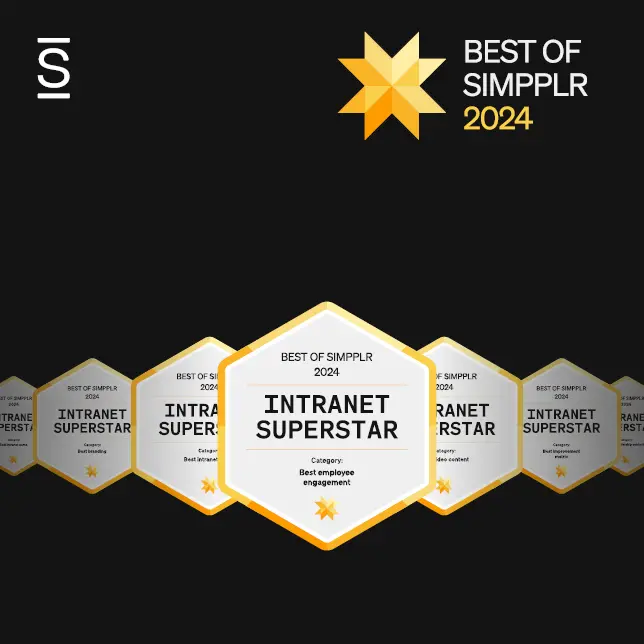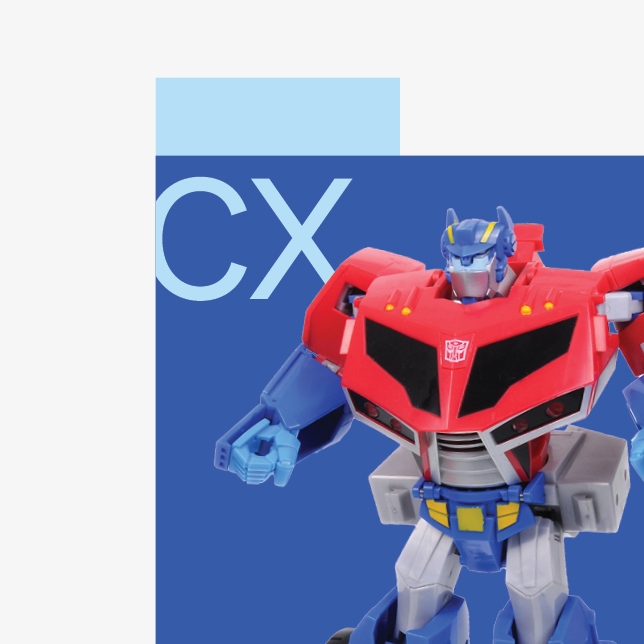Sometimes, the best opportunity for change comes when confronted with a problem. Xilinx had a problem that they had to solve. Their intranet was web-powered, meaning that any content or updates would require involvement by their web team. The process was simply inefficient. A ticket first had to be opened, which could take a day or two. However, the actual challenge was on the back end of the intranet.
The Problems
One of the main problems was the use of SharePoint. For Xilinx, the issue with SharePoint was the difficulty with permissions. As a result, it contributed to creating silos throughout the company. When Xilinx began to research their intranet issues, users shared “hands down” the problem with SharePoint. If they could, they would use another platform.
Second, they figured out from the limited amount of information extracted from the web team that the content put on the intranet was being ignored. Employees were navigating away to another side of the intranet when all relevant links to essential tools and systems were made available.
After Xilinx realized the problem, they knew it had to be fixed. It took deep thinking, not just about solving a problem. It was about what it meant to change.
Questions and Answers
Change and choice were valuable to Xilinx, especially Tom Thomas, Director of Employee Communication and Communities. His role entails three areas. The first is on the employee communication side. He also owns the video team, which does both their external video and internal video. Tom is also responsible for the diversity, equity, and inclusion team, which was launched recently.
Tom’s interest was to figure out how to launch a successful intranet that could create efficiency, transparency, and a central source of truth. Tom and Xilinx knew we needed and wanted to “divorce” the web team. And it was an amicable divorce. The web team needed the resources to focus on the external web and not focus on intranet issues. Tom also knew that Xilinx needed a successful intranet, but they had to discover what that meant for their organization before settling on a solution. The other impediment to the process was money.
Any executive team would want data and factual information before they invest in a platform. It would be doubly hard when the same group was already telling Tom and his team that the company had already paid significantly for some of the same functionality through the Microsoft tools. Tom knew the job was to sell the executive team what a new internet could mean for the company.
To convince the executive team, Tom focused on three different measures of need from the proposed internet.
- Their current system was effective to some extent, but did it communicate well? The answer was no.
- They also examined how it helped their employees become more productive. It was not.
- Lastly, could their current internet help create an inspired, aligned and engaged workforce? It was evident that the existing intranet was not meeting their needs.
The answers were critical to Xilinx because they were trying to solve the lack of efficiency, productivity, and collaboration. They also needed to shift the culture at Xilinx to be more transparent, more open, and to have a more effective two-way dialog between leaders and employees. The leadership team has a genuine need to understand what employees are required to be productive and happy. Essentially, Xilinx was putting together an inclusive employee engagement program.
The Content, Engagement, and Scale
While the intranet is a significant part of the engagement process, it could not be the entire focus. Xilinx had other needs. It was working on several different programs to engage employees. On was a more inclusive quarterly results communication process. People also wanted to discuss subjects such as benefits and other programs that their Human Resources team was rolling out.
At the core of all of the engagement initiatives and binding them together was the intranet. So when Xilinx examined the first pillar—effective communication, they had to include each of the answers from their investigation. In response, Tom and Xilinx recognized that they required a single source of truth.
All of the current information sitting in SharePoint had to be transitioned to a reliable and easy-to-use intranet platform. That was not all. It was necessary to measure how many people used the platform daily or monthly and repeat users. To go one step further, it was not only about if employees were using it. It was also about how they were using it. Were they merely going to the front page of the site? What were other areas being utilized? Xilinx needed to analyze and balance where users were exploring more deeply.
The issue of content was also a concern. The information shared on the new site needed conversion to other sites. As people traversed that content, Tom and his team wanted to measure usage, and the platform had to include that capability. Xilinx wanted to make sure that there was a two-way dialog between leaders and employees and each other. More importantly, leaders needed to engage with this content and respond to employees engaging with that same content. For example, in the event of a new bonus structure roll-out, employees could question and comment as necessary. Their CPO could also promote the content and engage with people who had comments, and answer pertinent questions to drive transparency.
Xilinx also had to ensure that any acquired platform would scale as their company did. Part of that scale was governance over growing content. While they wanted a platform where every employee had a voice, they also knew that there was a requirement for guidance on content on the site. They had to establish goals that would grow alongside the published information. Also, there had to be an assurance that anything placed on the platform could be easily “pruned,” especially if it was not adding value or the site had no activity.
A Simpplr Answer
One of the first things Tom and Xilinx discovered after choosing Simpplr was creating and placing content on the platform without difficulty. This process is what they initially wanted from their intranet. It had to be a place where every employee had a voice and knew that they had the opportunity to blog. Employees also discovered they had a chance to create content on the sites that they were participating in.
To ensure success, they monitored how many people created content or met their established goals and parameters. As Xilinx scaled, they could prune content that was not adding value through a monthly review process. While reviewing every site, Tom and the team were careful to check if it had no activity, low activity, or simply a niche site.
Through Simpplr’s built-in platform analytics, Xilinx could see that the experience they created for their employees was working. While it was personalized for each group, they also made sure that employees were engaging globally. Xilinx has offices in Singapore, China, India, and Europe. Each geographic location not only had its own landing pages within Simpplr, but their teams of people could also create content local to those organizations. Admins could check the activity of those sites, who are accessing them, what content was resonating with users. They then communicated that data back to local leaders to “tweak” details to personalize the experience. Additionally, Xilinx sets metrics that are available within the platform, making admins’ jobs easier.
What Xilinx found truly astounding to them was the power behind searchability. Through integration with tools such as ServiceNow, OneDrive, and SharePoint, employees could connect without leaving the platform. Not only has it improved employee productivity, but it is also increased conversations with employees and sharing of information. That means it is also easier to find information.
With the dialogue they developed, the governance process also became an inclusive process. The conversation also revealed issues or gaps in content, either from the corporate communications team or by subject matter experts throughout the company. In response, content is created, improved, and posted on the platform. They also wanted to ensure that content was enhanced as a company, business acumen, and organizational knowledge progressed at Xilinx. The response? Participation has increased across the company. Consequently, Xilinx modified the governance process over time to make sure that we’re being efficient in terms of delivered content.
Continued Inspiration and Measurement
Inspiration and engagement of employees were imperative from the beginning. Just like the approach to their organizational knowledge, Xilinx wanted to develop content centered on their culture and core values. They worked with Simpler to determine a tagging system that chose the engagement of created content. It opened the door to see how many people opened, viewed, and commented on the content. Ultimately, Xilinx could know if the central message was proliferating throughout the organization.
The tagging system and attention to the message also ensured the promotion of their message and brand internally and externally. Since Simpplr was easy to use, Xilinx went through the process of rebranding the site. These motions led to changing the imagery, logos, and overall brand story. Xilinx made sure that they were telling a unified brand story to their employees. First to clarify it, and second, they understood it. As a result, the brand story is presented cohesively externally. And it is managed and measured through tagging.
Measurement and inspiration were something that came to the forefront of Simpplr’s usage during the COVID-19 pandemic. About one month before the pandemic hit, there was a flood of information onto the platform. The potential confusion was mitigated by the ease of use and navigating the work from home office situation. According to Tom, without Simpplr, Xilinx could not have created their COVID-19 site or returned to the office as quickly as other platforms. That includes gathering employee feedback which helped navigate the process successfully. Tom believes that none of it would have been possible without gathering input from employees on the ensuing process.
Saying it Again
“I think it’s worth saying, again. One of the things that we wanted to drive our company to change as a cultural value is transparency, making sure that employees are engaged in the content, that our leaders are aware of what our employees are saying on the intranet, and actively responding to those comments.”
Tom cautioned that sometimes companies have to tell employees things they may want to hear. But it is essential that the intranet foster a sense of transparency, truth, and trust.
Any intranet must be the central source of both company values and business acumen. Most of all, it has shown that leaders value and understand their employees, the company’s needs, and the ability to fulfill them. It was an easier process with Simpplr.
















